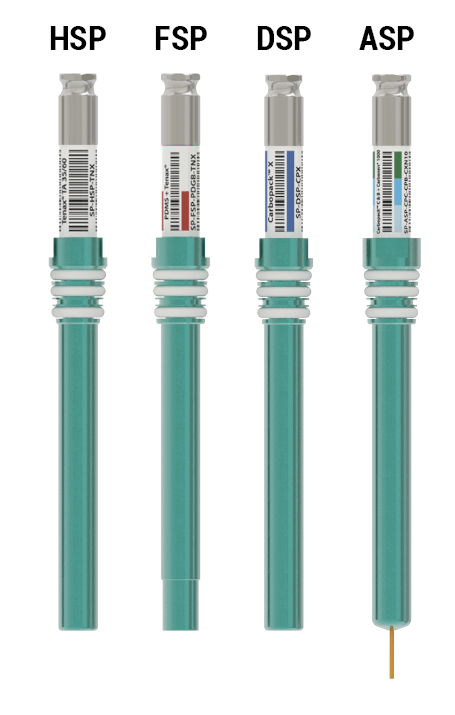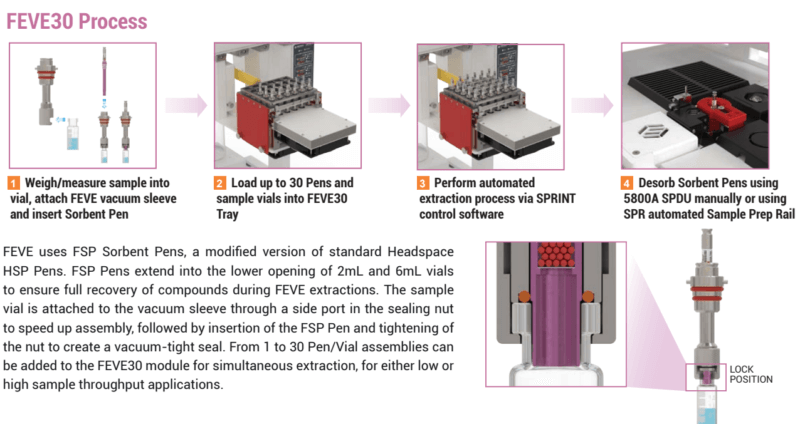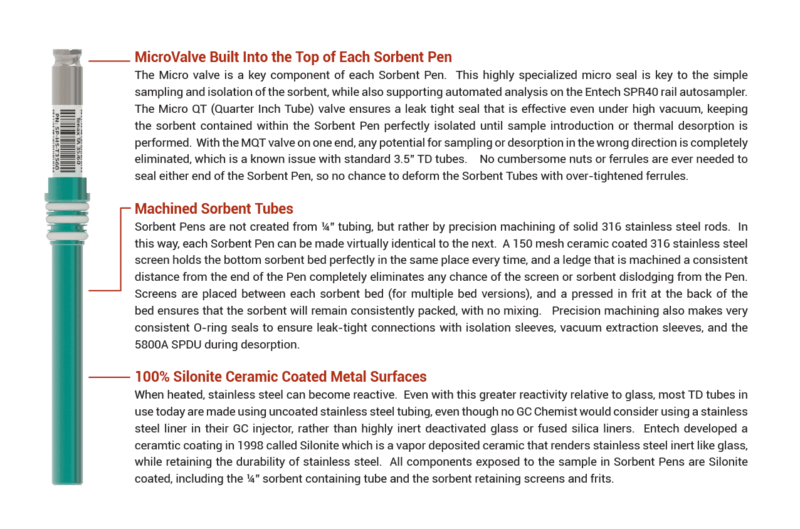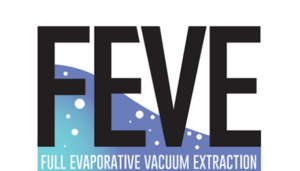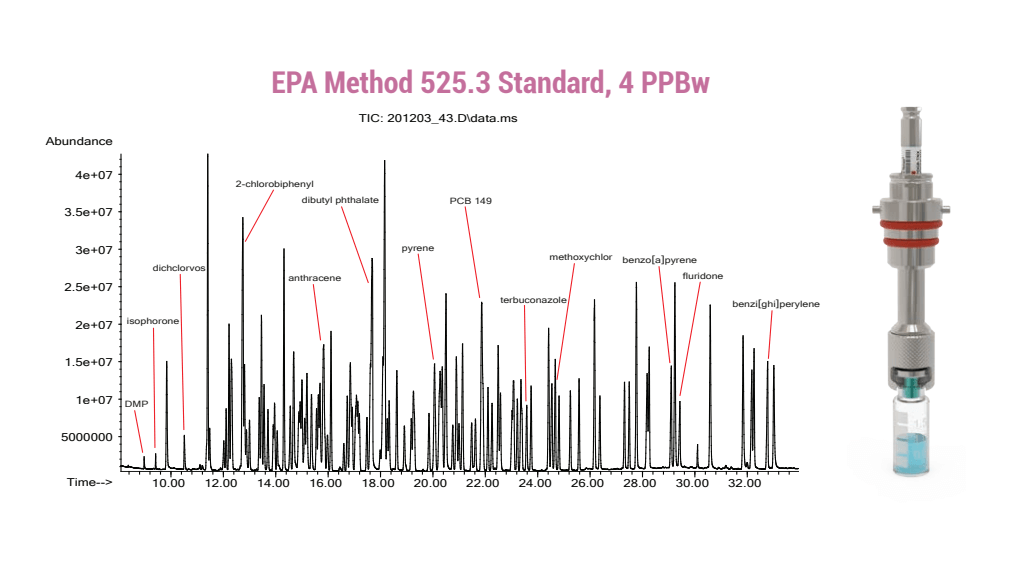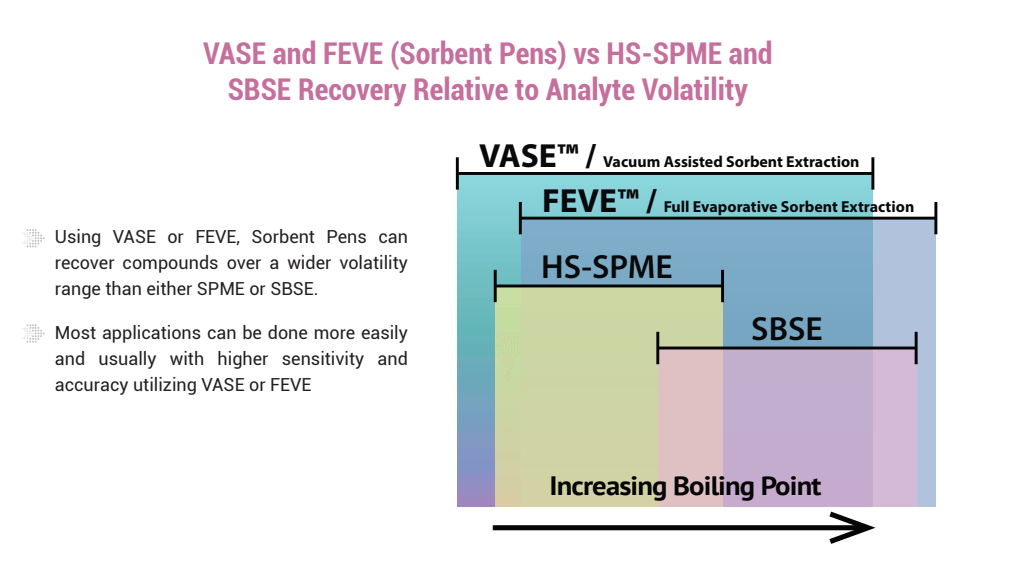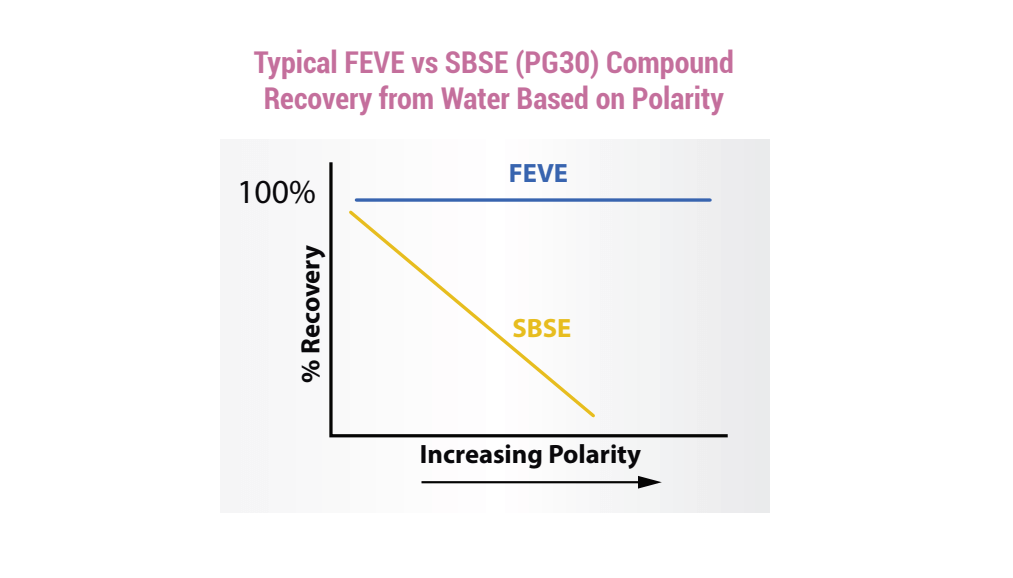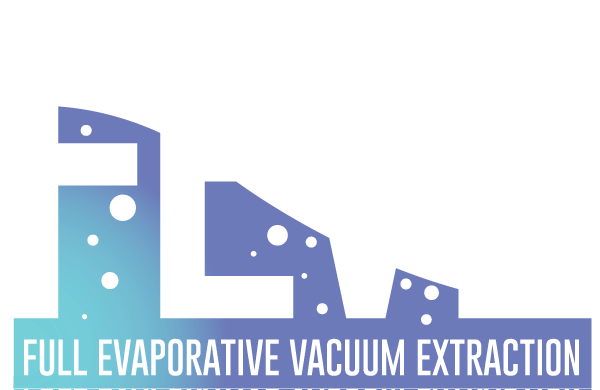
FEVE™ - Full Evaporative Vacuum Extraction
FEVE provides complete analysis of SVOCs in water matrices.
Compare All Sorbent Pen Extraction Techniques For Complete Coverage of VOC to SVOC Analysis Of Virtually Any Matrix
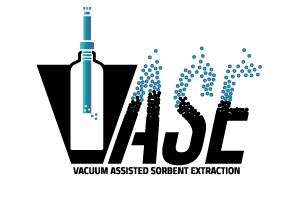
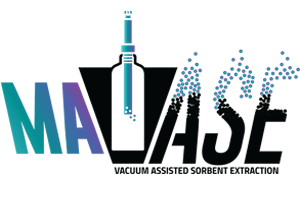
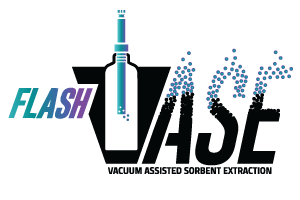
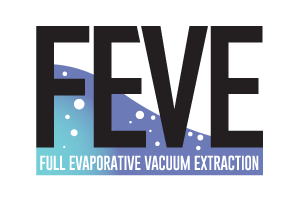
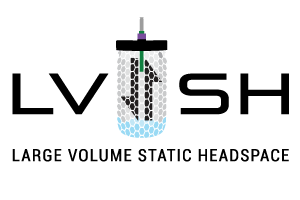
Introducing FEVE - What is it?
Full Evaporative Vacuum Extraction, or FEVE, is a new Sorbent Pen extraction technique for preparing samples for GCMS analysis that eliminates the need to “compete” with the matrix for compound affinity, because the complete volatile matrix is evaporated “through” the sorbent during the extraction process, leaving no choice for the compounds of interest but to be transferred to the Sorbent Pens. Therefore, all polar and non-polar target compounds are recovered equally, which is not the case with virtually any other extraction methods. FEVE uses the volatilizing matrix as the carrier gas rather than having to provide an external carrier gas, which dramatically reduces the potential for channeling and analyte breakthrough. FEVE can be used for any sample containing a volatile matrix with low suspended solids, including water, water/solvent mixes, and solvent extracts. For extracts, FEVE can be considered an alternative for Programmable Temperature Vaporization (PTV) injection, as FEVE can handle up to 5000ul sample volumes while leaving all non-GC compatible compounds in the vial, rather than in the GC liner. With FEVE extractions, sensitivity increases, while GCMS maintenance is vastly reduced.
FEVE performs the extraction in 2 sequential stages:
 Dynamic transfer at 25-40 °C at a vacuum of 0.3 to 10 psia depending on the solvent or matrix to be eliminated, using the evolving matrix to sweep the compounds of interest onto the sorbent while the matrix passes through unretained.
Dynamic transfer at 25-40 °C at a vacuum of 0.3 to 10 psia depending on the solvent or matrix to be eliminated, using the evolving matrix to sweep the compounds of interest onto the sorbent while the matrix passes through unretained. Static transfer under an increased vacuum (0.5 - 2 Torr) and higher sample vial temperatures to recover any remaining compounds still in the vial that were not delivered during the initial dynamic transfer step.
Static transfer under an increased vacuum (0.5 - 2 Torr) and higher sample vial temperatures to recover any remaining compounds still in the vial that were not delivered during the initial dynamic transfer step.
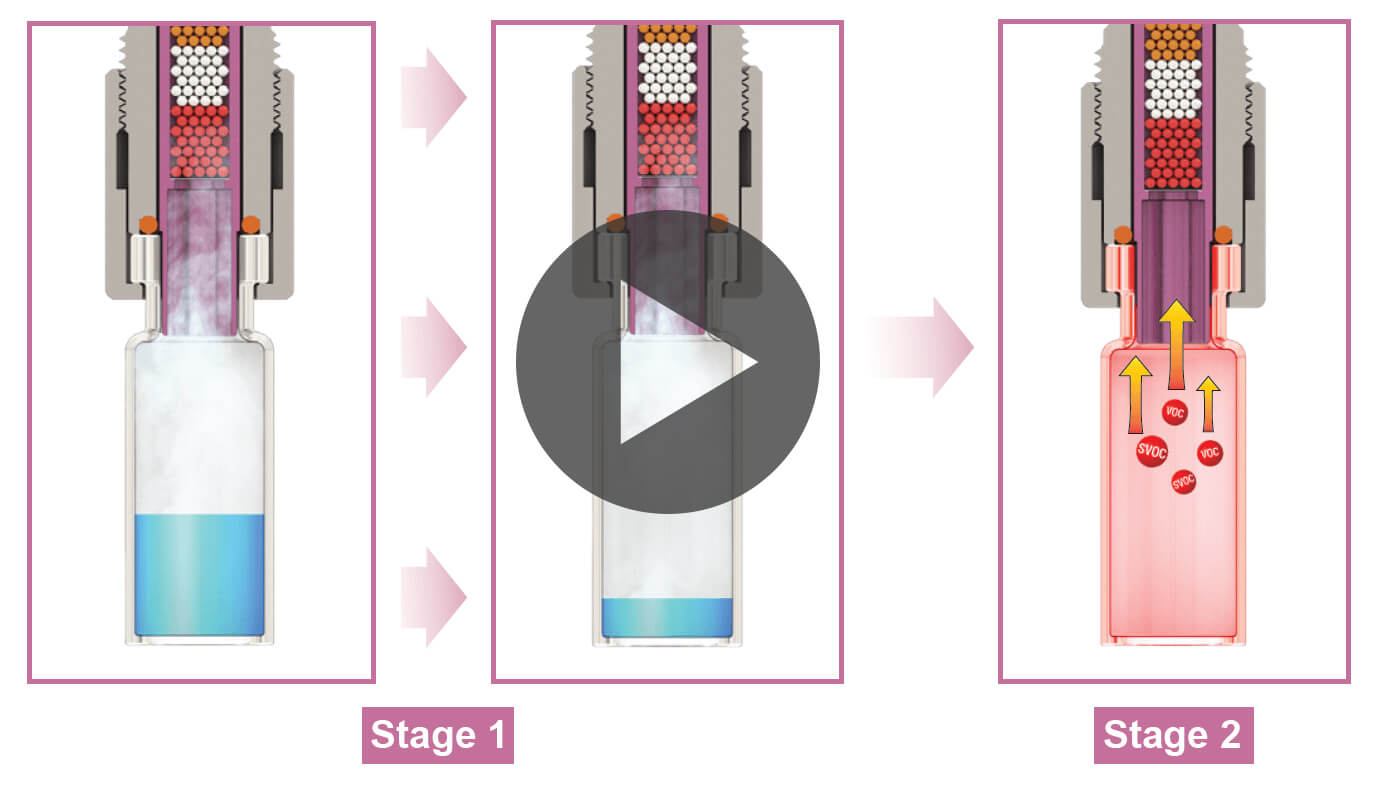
Click Image to Watch FEVE Video
FEVE - A Green, Highly Sensitive Technique for Water Analysis
For analysis of SVOCs in water, just 1mL of sample provides the same sensitivity as 1L of water when performing a Liquid/Liquid extraction that only delivers 1 ul of the final 1000 uL extract to a GCMS for analysis. In contrast, FEVE delivers 100% of the extract to the GCMS or GCMSMS, allowing the same sensitivity while using 1000x less sample. Channeling of the compounds through the adsorbent material is avoided by evaporating slowly, to improve recovery while avoiding carryover. The water vapor carries most compounds boiling under 350 °C to the adsorbent without the risk of channeling into the sorbent, and then a second stage under an even higher vacuum diffusively transfers compounds boiling from 350 °C to over 550 °C by heating the vials to only 180-230 °C while under a stronger vacuum. Using the FEVE30-6 module, up to 5mL of water can be extracted, providing equivalent sensitivity to a liquid:liquid extraction of 5 L of water!!! By removing the volatile fraction, FEVE does not have to compete against the sample matrix for “greater solubility”, like SBSE, full immersion SPME, Solvent Extraction, or SPE. After water removal, the glass sample vial becomes equivalent to a glass GC injection liner, so heating of the vial transfers any remaining SVOCs to the sorbent, but at relatively low temperatures (200 °C) due to operating at 1-2 Torr of vacuum. The use of lower temperatures allows the recovery of many thermally labile compounds such as Herbicides that were not considered to be GC compatible using other extraction and GC injection techniques.
Click Image For Details
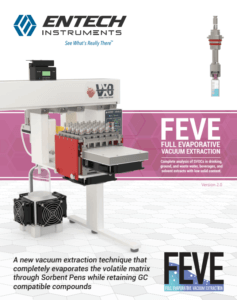
Download Technical Information Document
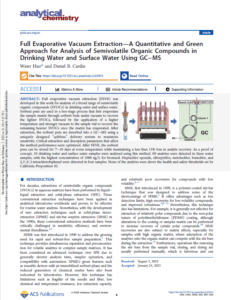
Access FEVE ACS Publication
FEVE utilizes a highly specialized sample enrichment device called a Sorbent Pen™.
